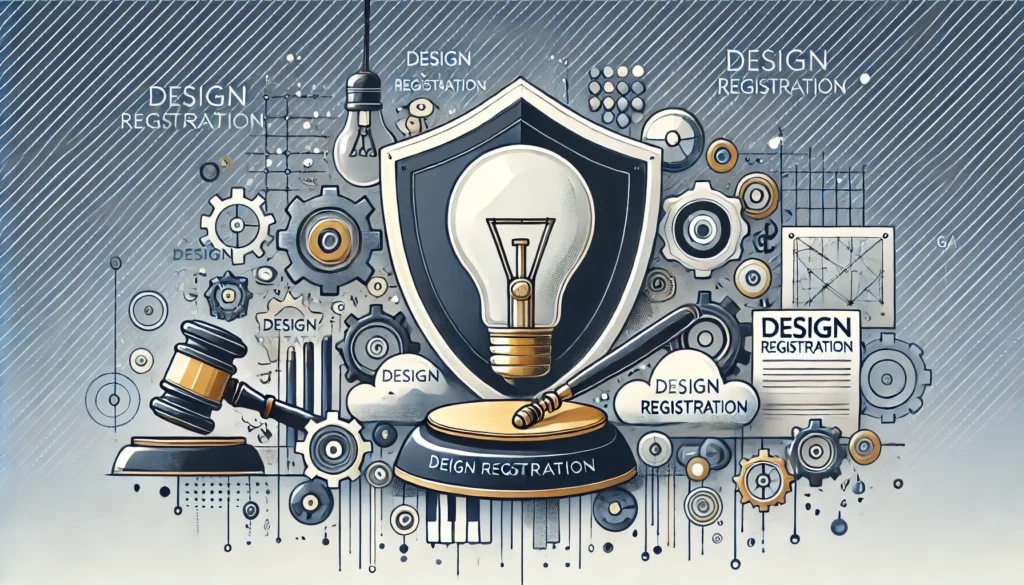
Design registration protects the unique aesthetic features of a product’s shape, configuration, pattern, or ornamentation. It ensures the creator’s intellectual property rights over the design and prevents unauthorized reproduction or imitation. Governed by the Designs Act, 2000, registering a design in India provides legal protection and exclusive rights for 10 years, extendable by an additional 5 years.
This guide explores the importance, process, benefits, and compliance involved in design registration.
What is Design Registration?
Design registration safeguards the visual appearance of a product, focusing on its unique, appealing features that attract consumers. It does not protect functional aspects or the method of manufacturing the product.
For example:
- The sleek design of a smartphone.
- The artistic pattern on textiles or wallpapers.
- The unique shape of a bottle or container.
A registered design ensures that only the owner can use it commercially, providing a competitive advantage in the market.
Importance of Design Registration
- Protects Creativity
Design registration ensures the creator’s effort and creativity are protected from being copied or imitated. - Market Differentiation
Unique designs help products stand out in competitive markets, enhancing their appeal and value. - Legal Ownership
The registration establishes legal ownership, making it easier to enforce rights against infringers. - Monetary Benefits
Registered designs can be licensed or sold, creating additional revenue streams for the owner.
Key Features of Design Registration
- Aesthetic Protection
Design registration focuses on the appearance, shape, and decoration of a product, excluding its functionality. - Exclusive Rights
The owner of a registered design enjoys exclusive rights to use, sell, or license the design. - Validity Period
A registered design is valid for 10 years and can be renewed for an additional 5 years. - Territorial Protection
Design registration provides protection within the jurisdiction where it is registered.
Eligibility Criteria for Design Registration
To qualify for registration, a design must:
- Be novel and original.
- Be distinctive and not previously disclosed to the public.
- Relate to the aesthetic aspect of a product, not its functionality.
- Not contain any obscene or offensive material.
- Be applied to a product that is manufactured or sold in large quantities.
Benefits of Design Registration
- Prevention of Copying
Registered designs prevent competitors from using or imitating your design without permission. - Business Advantage
Unique designs enhance brand identity and customer loyalty, providing a competitive edge. - Legal Protection
Design registration offers legal remedies in cases of infringement, including damages and injunctions. - Monetization Opportunities
Registered designs can be licensed or sold to generate additional revenue. - International Recognition
Designs registered under international agreements like the Hague System can gain global protection.
Process of Design Registration in India
- Conduct a Search
Perform a design search to ensure your design is novel and has not been registered previously. - Prepare the Application
Submit Form-1 along with:- Representation of the design (drawings or photographs).
- Statement of novelty explaining the unique aspects of the design.
- Applicant’s details.
- Classify the Design
Classify the design under the appropriate category as per the Locarno Classification system. - File the Application
Submit the application online or at the Design Wing of the Patent Office with the prescribed fees. - Examination of Application
The Design Office examines the application to check its compliance with legal requirements. - Publication and Registration
Once approved, the design is published in the Design Journal, and the registration certificate is issued. - Renewal
Renew the registration after 10 years to extend its validity for 5 more years.
Documents Required for Design Registration
- Representations: Clear drawings, photographs, or illustrations of the design.
- Power of Attorney: If the application is filed through a trademark attorney.
- Priority Document: If claiming priority from a foreign application.
- Identity Proof: For individual applicants.
- Declaration of Novelty: Detailing the unique aspects of the design.
Grounds for Rejection of Design Registration
- The design is not new or original.
- It has been disclosed to the public before filing.
- It contains offensive or obscene material.
- It relates solely to a functional aspect of the product.
- It is not distinguishable from existing designs.
Compliance and Infringement
- Infringement
Copying or using a registered design without the owner’s consent constitutes infringement. - Legal Remedies
The owner can file a lawsuit for damages, seek an injunction, or demand the seizure of infringing products. - Maintenance of Registration
Ensure timely renewal of the registration to maintain protection.
FAQs About Design Registration
1. Can a functional feature be registered as a design?
No, design registration only protects the aesthetic aspects of a product, not its functionality.
2. Is design registration mandatory?
No, but it provides legal protection and commercial advantages to the owner.
3. Can I register a design internationally?
Yes, you can seek international protection through agreements like the Hague System for Industrial Designs.
4. How long does it take to register a design in India?
The process typically takes 6-8 months, subject to the completeness of the application and examination.
5. Can a registered design be transferred or licensed?
Yes, a registered design can be assigned or licensed to another party for commercial use.
